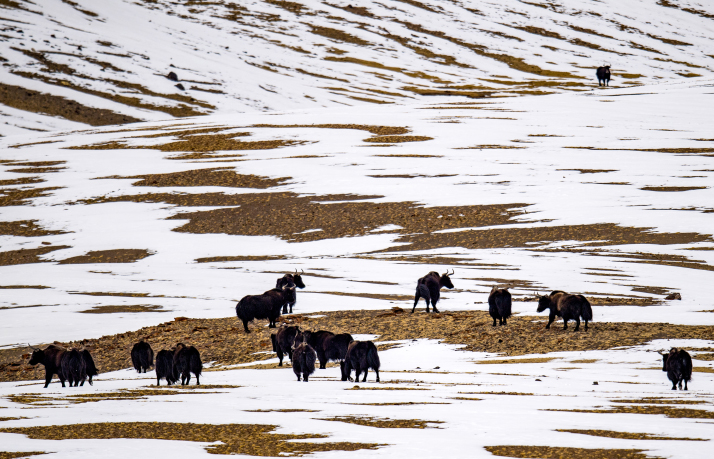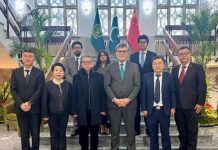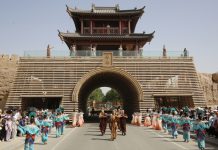
Diana Vreeland, Editor in Chief of Vogue U.S. from 1962-71, once said, “Fashion is part of the daily air and it changes all the time, with all the events. You can even see the approaching of a revolution in clothes. You can see and feel everything in clothes.”
The term Made in China over the past decade has undergone the ultimate 21st-century makeover. This rapidly changing landscape is a unique phenomenon beyond mere Shanghai Fashion Week collections; it waves the flag for the changes vibrating within China’s society.
And this includes Tibet Autonomous Region.
Clothing and accessories produced in Tibet are catering to the transforming appetite of Chinese consumers, with a proclivity for the domestically created and produced, as they become increasingly fascinated with the plateau region and its culture. A renewed millennial and Gen-Z appreciation for sustainable styles and the desire to add a zest of zen to the rat race that is megacity life in the pursuit of slower living also tie in well with all that Tibet has to offer, from Tibetan Buddhism to all-inclusive, non-wasteful yak culture.
The yak was the first creature to be domesticated by local people and has lived in the region since ancient times. It has developed with the civilization of the region’s population and gradually become an indispensable part of local culture. From serving as a load carrier to serving up its milk, meat… And wool.
Collaborations are part and parcel of today’s world, especially in fashion, and here is no exception. A growing number of brands have opted to team up with Tibetan cooperatives in the past decade, bearing both fashionable and fruitful socioeconomic results. And one thread is woven throughout: yak wool.
Today, for the people residing on the Qinghai-Tibet Plateau, the yak is the thread that connects past to future, local to global.
And here are three prime examples of fashion as a game-changer.

Norlha: Back to where it all began
Founded in 2007, Norlha became the plateau’s first yak wool weaving atelier.
Norlha’s workers all come from nomad families and most of them have lived the life of a herder at one time or another. Today, they see themselves and their children moving away from this livelihood, which has lost its appeal to the youth who inevitably come in contact with the market economy that has transformed the world, and China.
Norlha employees have not only learned to spin and weave but also taken on management positions in production, sales and other areas. Instead of herding the yak, they transform its wool into world-class products, becoming linked to the world in the process. Young people meet at Norlha and have built their family lives around their positions there. They live and thrive in the village of their origin, where they see their future. Their disposable income allows them to invest in better houses and education for their children. The yak is still the source of their livelihood; its continued presence and importance maintain a vital link between past and future.
Klee klee: growing and giving
Working together with ethnic minorities in and around China, the sustainable klee klee label (established in 2017) sees itself not just as a brand but as a pillar of the community. In the spoken Tibetan language, “klee klee” means “to slow down.”
Promoting traditional skills such as yak wool weaving provides support to vulnerable rural indigenous culture and prevents ancient techniques and natural resources from being lost entirely.
Klee klee works with the aforementioned Norlha. And part of this partnership’s proceeds is fed back into the local communities.
Even the beautiful natural landscapes where the materials come from are celebrated in klee klee’s Shanghai store on the ever-buzzing Anfu Road, hung significantly nearby the finished products themselves.
Shokay, A-O.K.
Shokay is a sustainable textile company best known for using yak wool to develop premium products.
The brand sources yak wool directly from herding communities in Tibet as well as Qinghai and Sichuan provinces, enabling them to earn a sustainable living while preserving their traditional lifestyle.
Providing skill training through women’s cooperatives, Shokay launched a hand-spinning cooperative in Qinghai and a hand-knitting cooperative on Shanghai’s Chongming Island at the Yangtze estuary to empower women and create opportunities.
The label also supports young Tibetan locals who want to build businesses in their communities. It links them to the supply chain, mentors them on entrepreneurship skills and trains them to source, class and ship the fibers to the label’s carding facilities.
In 2018, Shokay signed a deal with a nonprofit organization to establish the best practices for the livelihoods of yaks and their herding communities, coupled with grassland preservation initiatives in the mountainous areas that span eight countries—China, Nepal, India, Afghanistan, Pakistan, Myanmar, Bangladesh and Bhutan.
Fashion has been serving as a pioneer in the grasslands dotting Tibet. It’s far more than your mere cover shot; it’s the visualization of a changing social landscape. –The Daily Mail-Beijing Review news exchange item





